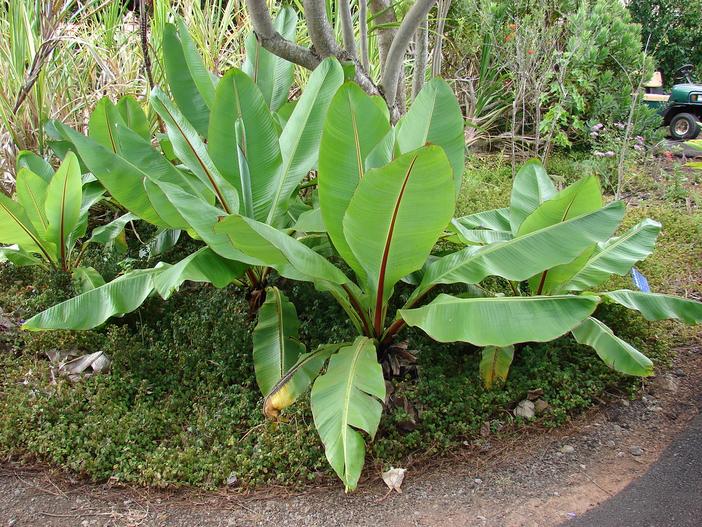Abyssinian Banana
(Ensete ventricosum)
Abyssinian Banana (Ensete ventricosum)
/
/

Forest and Kim Starr
CC BY 2.0

































Estimated Native Range
Summary
This species is often used as a focal point in tropical and subtropical gardens, and it is also grown for its cultural significance and as a food crop in Ethiopia. It requires full sun and medium water, thriving in a range of soil drainage conditions. While it is not frost-tolerant and needs winter protection in cooler climates, it has been awarded the Royal Horticultural Society’s Award of Garden Merit, indicating its value in horticulture. The cultivar ’Maurelii’ (Ethiopian Black Banana) is also recognized for its ornamental appeal. Potential problems include susceptibility to frost damage and the need for ample space due to its large size.CC BY-SA 4.0
Plant Description
- Plant Type: Herb
- Height: 12-20 feet
- Width: 6-10 feet
- Growth Rate: Rapid
- Flower Color: N/A
- Flowering Season: Summer
- Leaf Retention: Evergreen
Growth Requirements
- Sun: Full Sun
- Water: Medium
- Drainage: Slow, Medium, Fast
Common Uses
Edible*Disclaimer: Easyscape's listed plant edibility is for informational use. Always verify the safety and proper identification of any plant before consumption., Potted Plant
Natural Habitat
native to the highland regions of Ethiopia south to Tanzania, where it is found in open, grassy or montane areas
Other Names
Common Names: Abyssinian-Banana , Ensete , Ethiopian Banana , Pseudo-Banana , False Banana , Banana Grueso , Bananier D’Abyssinie , Ensête , Bananeira-De-Abissínia , Etiopisk Banan
Scientific Names: Ensete ventricosum , Musa ensete , Ensete edule , Musa ventricosa , Musa schweinfurthii , Musa arnoldiana , Ensete davyae , Ensete schweinfurthii , Musa bagshawei , Musa holstii
GBIF Accepted Name: Ensete ventricosum (Welw.) Cheesman